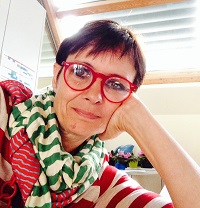 Bio:
Bio:
Journalist, graduated in Chinese language and literature, I am currently director of communication coordinating the network of museums press office & promotion, leading the International collaboration and European project funding team. I’m also in charge of MUSE external relations, and of the brand.
I started to work as freelance interpreter for Chinese language in 1983 to serve several Italian and Chinese companies until 1992, when I entered MUSE. At this museum I first served as multilingual interpreter until 1994, then I was offered to open the Editorial office for publishing 3 scientific reviews. In 1998 I established MUSE Communications department and press office, which I directed until October 2013. After the successful launch of the new MUSE museum, I dedicated my energies to international affairs to coordinate the EU projects and the PR. Among the most exciting activities the 2015Ecsite annual conference was certainly , Since 2017 I took over again the lead of communication department.
For MUSE I curated a number of small-size temporary exhibitions of arts, and realized a special communication project addressed to children in hospital. From 2012 to 2016 I was joining the Ecsite European association for science centers and museums network Annual Conference Program Committee. Since 2015 I am member of the Cultural Commission of the Municipality of Pergine (Italy). In 2017 I started to serve ICOM Italy as delegate for the Trentino Alto-Adige region.
Abstract:
Sharing Knowledge and Best Practice
Local and international cooperation frequently faces a wide variety of barriers: fear of competition, the copyright syndrome, differences in language and cultural habits. Assuming internal collaboration as a prerequisite, sharing ideas, knowledge & best practices among international partners and local stakeholders greatly improves the quality of the project outputs. The FabLabNet project case study will be presented to highlight that cooperation benefits the partners. Curiously enough, this partnership got the most from emphasizing the differences (in audience, technology, size, stakeholders) rather than the similarities. A short illustration of the toolkit used to facilitate this process (clear common goals, periodic thematic meetings, study visits, a shared online repository for docs and videos & a joint communication strategy) will be provided.